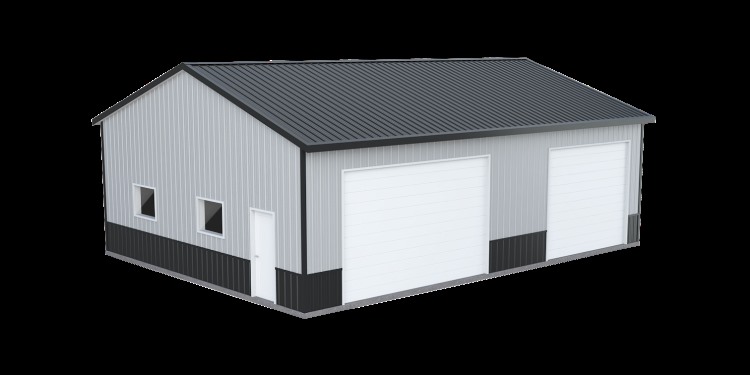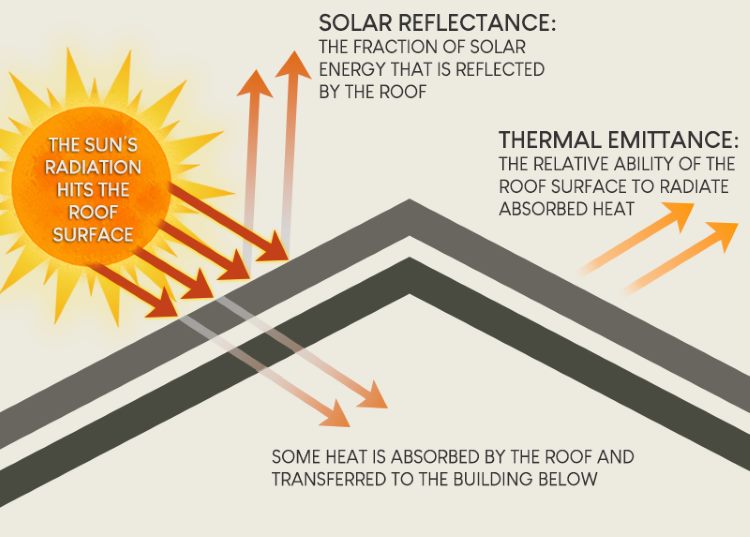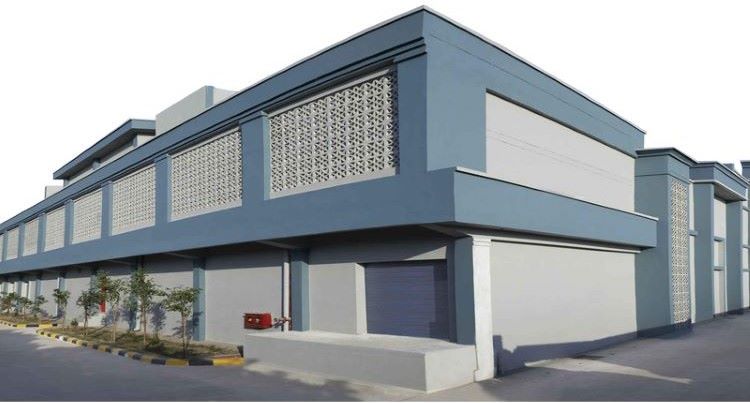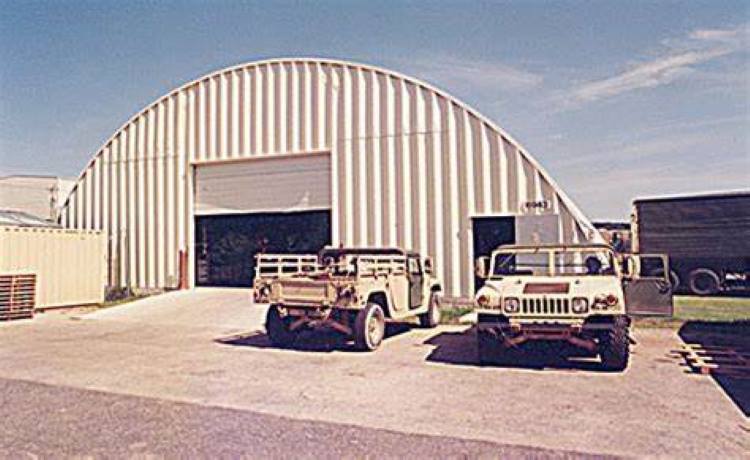Metal Building Colors-Exterior color combinations and popular color choices
No Pics.
Exterior color combinations and popular color choices
Metal building colors for exterior roof and siding panels

With a steel building, you can completely customize your metal roof and siding color combinations when selecting your design features. All of our suppliers offer pre-painted siding and roof paneling available in 12-20 standard colors and even more specialty options. This page features the most widely available standard color options the major metal siding and roofing manufacturers offer.
To help you mix and match potential color palettes, we created a metal building color visualizer using colors from the standard color chart.
Color Visualizer

Wall and Facade Siding Color Choices:

Building Roof Color Selection


Building Doors&Gates Color Choices:

Building Wainscoting Color Options:

Please note:
- Colors vary from supplier to supplier, and specific color options and names change.
- Color options also differ depending on the gauge of steel used for the metal panels (26 gauge vs. 24 gauge).
- Due to monitor and screen settings, the colors you see on your screen may not precisely match the actual colors.
- Once you have chosen a building supplier, we recommend you ask them to send you sample color swatches (or a printed color chart) so that you can see the actual colors in natural lighting conditions.
Index On This Page
1.Metal building color visualizer
2.Color schemes and combinations
3.How to choose a color scheme
4.Metal roof and siding panel paint types
5.Cool roof colors and paints
6.FAQs
Compare & save with competing quotes from local suppliers
Choose Country/State/Province:
Specialty and custom colors are available from certain building suppliers upon request and are available in over 100 options, including unique effects such as matte, color-changing, patina, and woodgrain finishes.
Whether selecting from standard or specialty colors, you’ll benefit from top-of-the-line coatings that preserve the quality of your building. Every paint option is designed to last, drawing upon modern advancements in paint chemistry to prevent degradation.
40-year warranties protect all paints. Unpainted panels coated with galvalume (a zinc-aluminum coating) are typically warranted for up to 20 years. This type of finish is most common on industrial metal roofs and Quonset hut buildings.
Metal siding and roofing panels are manufactured in 26 gauge thickness as standard. However, there are different sets of color options depending on whether you opt for the 26 gauge standard or the thicker 24 gauge option. Offering this wide range of selections ensures your building kit will meet your aesthetic needs just as well as fulfill your need for durability and stability.
Read on to learn more about what choices are available for metal building colors and how to select the options that work best for your project.
Metal Building Color Schemes
Here are some initial steps to assist you in choosing a color scheme:
Step #1: Explore color palettes & photo galleries
Step #2: Look at color options from manufacturers and request samples
Step #3: Discuss options with your contractor or architect
Popular Metal Building Color Combinations
High-contrast
Crimson Red + Polar White
Cobalt Blue + Bone WhiteHunter Green + Desert Sand

Low-contrast and tone-on-tone
In tone-on-tone themes, colors of the same type are chosen but in subtly different shades. The result is a soothing, understated look that blends into the environment.
Black + Charcoal Gray
Ash Gray + Light Stone
Brown + Copper

Compare & save with competing quotes from local suppliers
Choose State/Province:
Popular Color Schemes
Metal Home Color Schemes

Copper Penny & Gray |

Burnished Slate and Charcoal steel building |

Black on Black |

White with Black Trim |
|
|
View Metal Homes |
Shop House Color Schemes

Burnished Slate & Black Trim |

Ash Gray & Charcoal Metal Building |

Brown & Tan |

Copper Penny & Black |
|
|
View Shop Houses |
Garage, Shop Color Combos

Cobalt Blue & White building color scheme |

Taupe & Brown garage color combination |

Black & White Garage color scheme |

Charcoal Gray Steel Building with Black Trim |
|
|
View Metal Garages |
Colony Green Metal Building
Red Steel Building (Rustic Red & White)
Light Stone & Tan
Burgundy & Gray Barn




View all Barns
Hawaiian Blue & White color combo
White & Grey building colors
Quaker Gray & Ash Gray
Burnished Slate & Gray exterior paint colors




Compare & save with competing quotes from local suppliers
Choose Country/State/Province:
Picking a color combination that is aligned with your region’s characteristic aesthetic can help your property feel like a cohesive part of its surroundings, which can translate into greater desirability and value. Below are some examples of common regional color palettes.
Burgundy
Saddle Tan
Light Stone
Medium Bronze
Sand

Boreal Landscape Environment Region
Hunter Green
Brite Red
Koko Brown
Taupe
Light Stone
Copper Penny
Polar White

Coastal
Coastal regions also look to the local scenery for color inspiration, usually selecting colors found in the sea, beaches, and dunes.
Hawaiian Blue
Cobalt Blue
Ash Gray
Classic Green
Copper Penny
Sand
Colony Green

Tropical regions feature the most vibrant color palettes, pulling hues from exotic flowers and fruits. Oceanic colors are often widely represented as well.
Hawaiian Blue
Cobalt Blue
Koko Brown
Copper Penny
Hunter Green
Colony Green

Compare & save with competing quotes from local suppliers
Choose Counrtry/State/Province:
Even if your metal building is not designed according to these styles, having a corresponding home on the same property should influence your decision. Maintaining the same style theme between all buildings will give your property a more cohesive and attractive look.
Modern Featuring bold lines and sleek finishes, modern architecture relies on a blend of minimalism and drama in color selection. This is why you’ll typically see bright whites, striking greys, and deep blacks on these buildings.
Farmhouse Deeply traditional in style, this classic form of architecture uses timeless color schemes. Clean white is the most popular pick for siding, but barn red is another iconic choice.
Ranch Ranch style is laid back and cozy, usually opting for subdued colors that instill a sense of calm. These often include creamy whites, soft beiges, and earthy browns.
Spanish/Mediterranean Spanish and Mediterranean architecture typically features coloring naturally occurring in the clay and stone materials used. Therefore, it’s common to see terra cotta, golden tans, and mineral whites.
Craftsman Craftsman homes have a unique character created by chunky features and bold lines. In addition, they often use stronger colors to match this more pronounced look, such as deep greens, rich browns, and moody blues.
Victorian Victorian homes make a statement, combining colors and intricate details to create a fanciful appearance. It’s common to see anything from whimsical pastels and cheerful brights to somber and traditional dark tones.
Cape Cod Cape Cod architecture has a soft and charming look, leaning toward the lighter end of the color spectrum. Pure whites, powdery greys, and soft light browns are all popular in this style.
Many HOAs have specific color palettes that residents must adhere to. You will often need to select hues that are very similar to the other homes and structures already present in the neighborhood. HOA color restrictions can even require specific color combinations, limiting your choices regarding trim and roofing.
Be aware that even if your color selection aligns with your HOA requirements, they may still object to the sheen of the finish or the use of metal as a material at all. We advise you to inquire with your HOA to ensure that a metal building installation is permitted before you start your project.
For example, if there is already a structure featuring a muted, cool-toned color scheme, choosing a bright and warm palette for your metal building wouldn't be complementary. The best visual cohesion is achieved when you keep all of your property’s buildings within the same family of tones.
If you are running a commercial facility, optimal recognizability may also require picking a color scheme that aligns with your company’s branding. Choosing the trademark hues associated with your company’s logo makes it immediately apparent to customers and business partners that they’ve found the right place and that your metal building is a part of your company’s property.
Lighter colors work well in this respect, but it is also possible to choose paint formulations with enhanced heat emission and UV-reflection properties. These are typically marketed as “cool roofs” and “cool paneling,” as discussed below.
Heat management should be a particular concern if you plan to use air conditioning in your metal building or if it will be used to shelter livestock or temperature-sensitive materials. The quality of certain crops, food items, chemicals, and even equipment and machinery could be compromised when overheated.
Get Four Quotes
Compare & save with competing quotes from local suppliers
Choose State/Province:

Using SMP paint can come with some problems. The color might not hold up well in climates with a high UV index or humid and coastal areas. Extreme temperatures have also been known to compromise its longevity. SMP is prone to “chalking” – producing a white powdery residue as the resins in the paint deteriorate.
SMP’s issues with chalking and fading are major detractions if you want to go with bright, vibrant colors, but they are far less troublesome if you are planning to pick light-colored paneling.
You may find that the color selection with SMP is not wide enough to meet your needs. Because SMP is not the preferred paint for top-quality products, it tends to only be available in limited color options.
PVDF is recommended for metal structures that must withstand heavy exposure to the sun, humidity, and pollutant particles in the atmosphere. Since it retains its shine and pigmentation well, it is the best choice when vivid or dark colors are preferred.
Another advantage of PVDF is that it is the paint type typically used for specialty colors and finishes, such as metallics and patinas. This means that you will enjoy a much broader spectrum of color options when considering your selections.
Because PVDF/Kynar is a best-in-class material, you can expect these paint options to cost more than those from lower tiers. Their outstanding performance and lifespan justify the expense.
PVDF Layer System
PVDF paint layer system
Baosteel Metal Roofing is one of the few suppliers to produce this type of paint. The brand offers its patented in two color options, which transform between a number of hues.
SMP:
SMP comes with reduced coverage. While they might also meet the 40-year mark for film adhesion, they typically have shorter terms for chalking and fading. You will also encounter more exceptions to what is included in the coverage.
Polyester:
Compare & save with competing quotes from local suppliers
Choose State/Province:
Regarding color selection, suppliers often offer a wide range of options for cool coatings. However, you’ll get the best solar reflectivity (SR) performance by choosing light colors such as snow white and bone white or light grays such as ash gray.

Note: Higher numbers are better for both emissivity and reflectance
Color
SR
SRI
Bone White
0.68
81
Snow White
0.65
79
Almond/Taupe
0.63
76
Silver Metallic
0.52
60
Light Stone
0.5
58
Saddle Tan
0.48
56
Brite Red
0.49
55
Ash Grey
0.46
52
Copper Metallic
0.46
51
DesertSand
0.42
48
Slate Grey
0.37
41
Rustic Red
0.36
40
Hunter Green
0.35
39
Colony Green
0.35
37
Medium Bronze
0.33
36
Crimson Red
0.33
34
Hawaiian Blue
0.31
31
Coal Black
0.3
31
Charcoal Gray
0.28
30
Koko Brown
0.28
30
Classic Green
0.28
30
Cobalt Blue
0.28
30
Burnished Slate
0.28
29
Galvalume (non-painted) - $0.75-$1.50 per sq ft
Painted (standard colors) - $1.00 - $2.00 per sq ft









